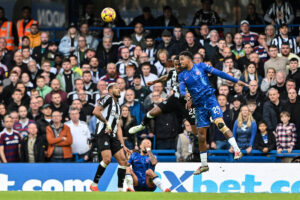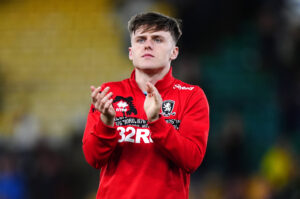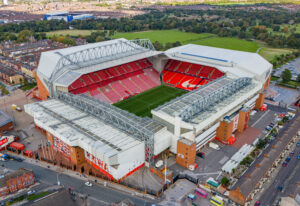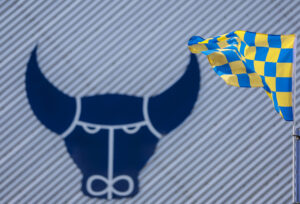Welcome back to Last Word On Football’s look at some of Liverpool’s most iconic figures. From players to managers, we look at who has an impact during their time at the club that no Liverpool fan will ever forget. Next up is a legendary midfielder and captain, Graeme Souness.
Souness joined Liverpool in 1978 and left in 1984. The Scotsmen was a key part of Liverpool’s dominance in the eighties and has gone down as an inspirational figure. He won five League titles, three European Cups and three League Cups as a player.
The now 67-year-old would return as manager in 1991 but failed to achieve similar success. He won only one FA Cup as gaffer of the club.
Icons of Liverpool: Graeme Souness
Straight Into the Thick of It
Graeme Souness joined Liverpool in 1978 from Middlesborough for what was then a record transfer fee of £350,000 between two English clubs. Bob Paisley brought him to Anfield along with three other Scottish players. Sourness was joined at Anfield by Kenny Dalglish and Alan Hansen – all three would become Liverpool icons.
Sourness was thrust straight into the Liverpool first team. He made his first-team debut against West Bromwich Albion at Anfield, but his real class shown through in his third game against bitter rivals Manchester United.
Souness scored an incredible volley in that contest from the edge of his own penalty area. Fans voted for the strike as the goal of the season. But, it was Souness’s celebration that came to define his time at Anfield. He wheeled away with his fists clenched, arms aloft and his teeth barring – a picture of determination and passion.
Souness also became known for something else during his time at the club – he liked to drink. Legends say that he would consume champagne into the wee hours of the morning which is where he got his nickname: “Champagne Charlie.”
Despite, an underwhelming league season, the Reds would advance to the European Cup final. There they would meet Club Brugge.
Liverpool had enormous trouble with the Belgians as they deflected wave after wave of attacks. Their plan to take the game to penalties seemed to be working.
But midway through the second half, the ball dropped to Souness. Champagne Charlie expertly held off two players and played the perfect ball through to Kenny Dalglish. The King did the rest and scored with a brilliant chip.
The Reds held on and won their second European Cup. In his first season at Liverpool, Souness was a European Champion.
Sustained Success
Liverpool was on a mission to win the League in 1979/1980 after a poor showing in the previous year.
And they succeeded in winning the League. With Sourness anchoring the Liverpool midfield, the Reds were fantastic. They only conceded four goals at Anfield and Sourness dictated games with his precise long balls and his unparalleled ability to retain possession.
But, he was more than just a passer of the ball. The midfielder was a ferocious tackler who seemed to love that side of the game. He often cleaned out his opponent and benefited from playing in an era where referees were more lenient.
The Reds retained their league title in 1980 and Sourness picked up his second European Cup with a 1-0 win over Real Madrid.
The Captaincy
In 1981/82, Sourness replaced defender Phil Thompson as club captain at the request of Bob Paisley.
The decision was following Liverpool’s alarming midtable slump and happened after an embarrassing defeat to Manchester City.
This set off a long-running feud between the two men which has yet to be resolved. However, history proved Paisley right.
With Sourness as captain, Liverpool recovered and won the League Championship and League Cup that season. And further success followed in 1983. After beating Manchester United in the League Cup, Souness showed his class by allowing Paisley to lift the trophy.
This marked the end of an era as Paisley retired in 1983.
Souness’ Best Season and the Treble
New manager Joe Fagan joined in 1984 and Liverpool was somehow even better.
First, the Reds picked up another League Cup. Sourness was incredible in that game – Champagne Charlie ran the show and scored an amazing volley from 25 yards that won the game.
But it all paled in comparison to the European Cup run. The Reds navigated some difficult early rounds which included a game against Atletico Bilbao and the notorious Butcher of Bilbao, Andoni Goikoetxea.
The Punch
But, the ultimate test was the semi-final draw where the Reds played Dinamo Bucuresti. The Romanians were known for their brutal and physical game which was summed up by their captain Lica Movila.
In the first half of the first leg, Movila punched Sourness three times before the Scot eventually responded. With time winding down, the Liverpool captain got his revenge when the referee wasn’t looking.
“I threw a short right hook which broke the Romanian’s jaw in two places,” said the captain.
Sourness didn’t let the incident throw him off his game.
“I felt nothing at all for him as he was helped off but later when I was told of the extent of the injuries, I was full of remorse.” said the midfielder. “I meant no real harm other than to warn him he had picked the wrong person to intimidate.”
And Sourness showed his worth in the return leg. The Romanian crowd booed him non-stop during the warm-ups and the midfielder simply started to ball juggle.
In the actual game, he was magnificent. Sourness controlled the contest and even picked himself up an assist. He hardly wasted a pass which was impressive as his opponents were out for revenge.
“The tackles became progressively worse, going from shin to knee to thigh. My socks were in shreds and one (shin) pad was split from top to bottom,” he said.
And this game was perfect preparation for the final.
No Place Like Rome
In the final, Liverpool faced AS Roma at Stadio Olimpico. The Reds entered a modern-day Roman coliseum. They were surrounded by fevered fans who were desperate to will their team to a win.
And yet, Graeme Souness controlled the game. He stifled Rome’s attack and once again dominated the midfield.
This allowed the Reds to take the game to penalties where they held their nerve and won 4-2. Bruce Grobbellar’s goalline antics stole the show and Sourness emphatically converted his penalty.
He then lifted the European Cup as captain, his last act as a Liverpool player.
A Great Player, A Horrendous Manager
In 1991, Souness was back as manager.
However, he failed in that role. Despite an FA Cup win in 1992, his recruitment strategy was horrendous. He replaced great players such as Peter Beardsley and Ronnie Whelan with flops like Julian Dicks.
The team struggled under his leadership and failed to challenge for the title. The only positive of his time in charge was that he gave chances to Steve McManaman and Jamie Redknapp. The two players would go on to become key men at Anfield.
His team suffered from infighting and failed to challenge for the Premier League.
He also enraged fans when he gave an interview to The S*n about his recovery from heart surgery. The City of Liverpool has boycotted the newspaper ever since they printed lies about the behaviour of fans during the Hillsborough Disaster.
Graeme Souness did apologize for this action.
“The thing that really killed me, and makes me sad today is that the last thing I want to do is upset any Liverpool supporter – especially the people damaged by Hillsborough – in whatever shape or form,” he said.
His spell as manager and his interview with The S*n means that Sourness will never be loved like other icons such as Ian Rush or Kenny Dalglish.
However, he remains one of the club’s greatest ever players and deserves his spot amongst legends.
Main Photo
Embed from Getty Images






